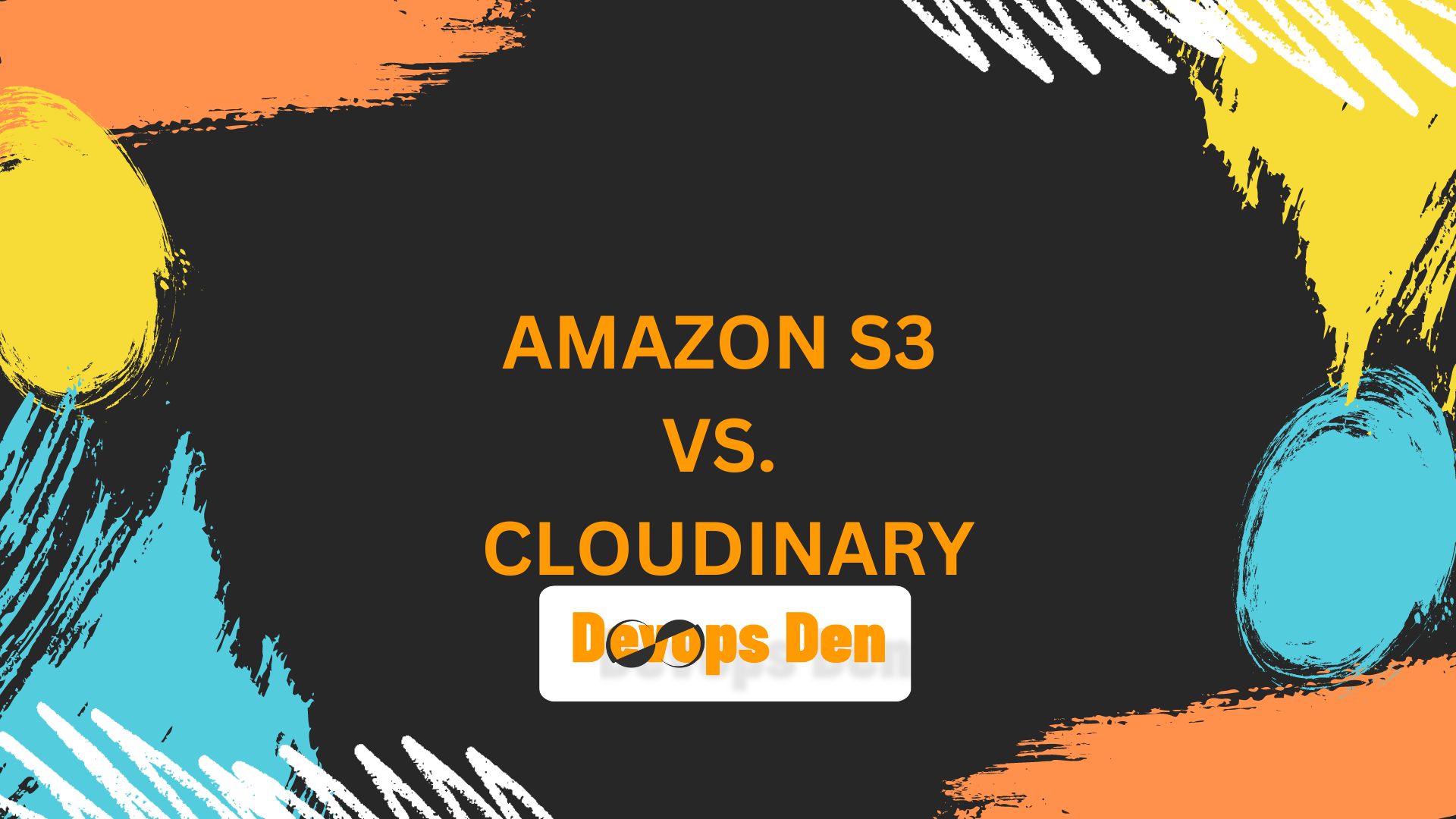Amazon S3 vs. Cloudinary: Choosing the Right Cloud Storage Solution
 Devops Den
Devops Den
In the realm of cloud storage and media management, two powerful options often come up: Amazon S3 and Cloudinary. Both platforms offer unique features and capabilities that cater to different needs. In this blog, we’ll explore the key differences, advantages, and use cases for each to help you decide which solution is best for your project.
Overview
Amazon S3 (Simple Storage Service) is a scalable object storage service provided by Amazon Web Services (AWS). It is designed for storing and retrieving any amount of data from anywhere on the web. S3 is primarily a raw storage solution, meaning it provides a reliable way to store files without built-in media processing capabilities.
Cloudinary, on the other hand, is a comprehensive media management platform designed for web and mobile applications. It specializes in image and video management, offering features like automated transformations, optimizations, and CDN delivery.
Key Features Comparison
| Feature | Amazon S3 | Cloudinary |
| Storage | Object storage for any file type | Media-centric storage for images and videos |
| Media Processing | No built-in processing; third-party tools required | Advanced image/video transformations and optimizations |
| CDN Integration | Can integrate with Amazon CloudFront | Built-in CDN for optimized media delivery |
| User Management | Basic access controls | Advanced user management and collaboration features |
| Pricing Model | Pay for storage and data transfer | Pay based on usage, including transformations and bandwidth |
| API Integration | Rich API but requires more setup | Simple API with extensive media management features |
Advantages of Amazon S3
Scalability: S3 scales seamlessly to accommodate growing amounts of data, making it suitable for large enterprises.
Flexibility: Users can store any type of file, from images to videos to documents, giving it versatility.
Integration with AWS Services: Easy integration with other AWS services like EC2, Lambda, and RDS enhances its functionality.
Cost Management: S3 offers a pay-as-you-go pricing model, allowing users to manage costs effectively.
Advantages of Cloudinary
Media Optimization: Cloudinary automatically optimizes images and videos for different devices and browsers, ensuring fast loading times.
Transformation Capabilities: Users can perform real-time transformations, such as resizing and format changes, via simple URL parameters.
Built-in CDN: Cloudinary’s integrated CDN ensures faster delivery of media assets without additional configuration.
Developer-Friendly: Its API is designed for ease of use, making it accessible for developers looking to integrate media management quickly.
Use Cases
When to Choose Amazon S3:
If your project requires extensive storage for various file types beyond just images and videos.
When you need high scalability and integration with other AWS services.
If you prefer to handle media processing and transformations through third-party tools.
When to Choose Cloudinary:
If your primary focus is on managing and delivering images and videos with advanced features.
When you need built-in optimization and transformation capabilities for a better user experience.
If you want a straightforward setup with a focus on media management and delivery.
Conclusion
Choosing between Amazon S3 and Cloudinary depends largely on your specific needs. If you require a robust storage solution with flexibility and scalability, S3 is an excellent choice. However, if your primary concern is efficient media management with optimization and transformation capabilities, Cloudinary is likely the better fit.
Evaluate your project requirements, budget, and technical constraints to make an informed decision that aligns with your goals. Both platforms have their strengths, and the right choice will empower your application and enhance user experience.
Subscribe to my newsletter
Read articles from Devops Den directly inside your inbox. Subscribe to the newsletter, and don't miss out.
Written by

Devops Den
Devops Den
Whether you're a seasoned DevOps professional or just starting your journey, we're here to support you with expert insights, practical guides, and valuable tools to help you succeed in the world of DevOps